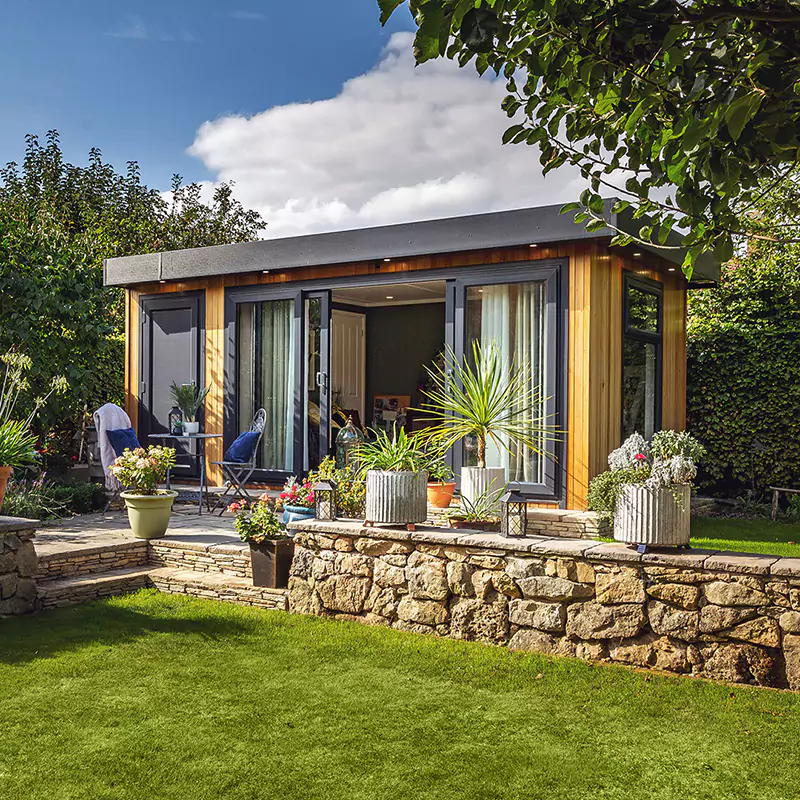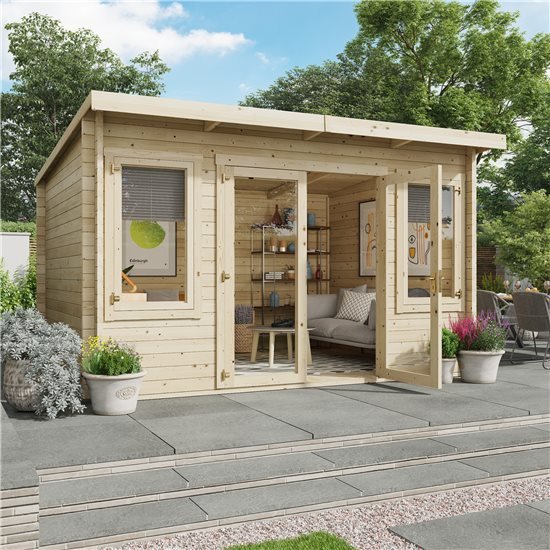Good Ideas On Planning Permission For Garden Outhouses
Wiki Article
What Permits Do You Need For Garden Rooms And Other Structures That Are Related To Highways?
Highways concerns can impact the need for a plan permit when planning to construct garden offices, conservatories outhouses, garden extensions or outhouses. These are the most important concerns: Sight and Visibility Lines
Planning permission is needed if the new structure hinders visibility to drivers entering and leaving the property or interferes with sightlines at intersections and roads that bend. The planning authority will assess whether the structure poses a risk to road safety.
The highway is close by:
Typically, structures that are constructed close to highways like front garden rooms or extensions in close proximity to roads require planning approval. There are certain distance rules to ensure that the structure doesn't interfere with the safety of the highway.
Access and Egress
Planning permission is required for any modifications to points of access. This is for the purpose of creating new driveways, or altering the existing ones to allow for the new design. It is crucial to make sure that all exits and access points are secure, and don't interfere with traffic flow.
Parking:
Planning permission may be required if a proposed construction affects parking spaces or demands additional parking. The planning authority will evaluate whether the new development has enough parking and doesn't create congestion for parking in the street.
Traffic Generation
Developments that are expected to generate additional traffic, such as garden offices designed for business use with clients visiting, need approval for planning. The plan will assess how the impact of the local traffic flow and road safety is likely to affect.
Effect on Pedestrian Access
If the structure proposed is encroaching on pedestrian paths or pavements, planning permission is required. The safety of pedestrians and ensuring they have the ability to be able to access the site is essential.
Construction Impact on Highways
It could be necessary to obtain planning permission if construction activities have an impact on the highways. This could include the movement of trucks as well as temporary obstructions. The authorities for planning can establish conditions that reduce disruptions to the road network during construction.
Drainage and Runoff of Water:
The impact of the development on drainage and water runoff, particularly how it impacts the highway is another aspect to be considered. Planning approval is needed in order to make sure that construction does not worsen flooding or drainage problems that could impact the road.
Street Furniture and Utilities
Planning permission is required when the construction project has an impact on the street furniture or underground utilities. The planning authority will work with the relevant agencies to address these concerns.
Conformity to Highway Authority Guidelines:
The local highway authority could have guidelines specific to developments close to highways. Planning permits allow for compliance with road safety regulations.
Noise and Disturbance caused by Traffic
The new structure may cause more noise or traffic (e.g. the office in the garden that receives visitors and deliveries). Planning permission is required to limit any adverse effects.
Accessibility to Public Transport
The planning permission must be obtained if the project could be detrimental to infrastructure for public transport, such as bus stops and train stations. The effect on passengers of public transport and the integration with the transport system will be taken into consideration.
Highways play a significant role when deciding if you should grant planning permission for garden rooms or conservatories. The proposed development must not have a negative impact on road safety as well as pedestrian accessibility or infrastructure. Talking with the local planning authority as well as the highway authority at the beginning of the process of planning can help address these concerns and ensure compliance with all applicable regulations. Follow the top rated essex garden offices for blog recommendations including garden room planning permission, best electric heater for cabin, garden rooms near me, what size garden room without planning permission, do you need planning permission for a garden room, garden rooms in St Albans, outhouses for garden, garden rooms in St Albans, garden room planning permission, outhouse uk and more.

What Kinds Of Permissions Are Needed To Construct Garden Rooms And Other Structures?
Planning permissions can be subject to the environmental impacts of garden rooms, conservatories and outhouses. Be aware of the following environmental considerations:
Planning permission might be required when the proposed structure is expected to affect wildlife habitats in the area like hedgerows, trees or ponds. To evaluate and reduce the impact of biodiversity, an ecological survey might be needed.
Habitats and Species that are Protected:
Planning permits are required when the property is animals that are protected (e.g. bats, newts) or is located in or near habitats of Special Scientific Interest (SSSI). In order to protect them it is essential to implement specific steps.
Preservation Orders for Trees Preservation Orders
Planning permission might be required if the project involves the removal or alteration of trees protected by TPOs. The local authority will review the impact of the proposed structure and may recommend replacement plants or other mitigation measures.
Risk of flooding and Water Management Risk and Water Management
In the case of developments that are located in areas with high risk of flooding or near water bodies, planning permission is required. A study of the flood risk (FRA) may be required to ensure the structure has adequate drainage and does not increase flood risks.
Sustainable Construction Practices
Sometimes planning permission is needed to ensure the use and adoption of sustainable building materials and methods. It is important to consider the energy efficiency of the materials, their insulation, as well as their carbon footprint.
Drainage and surface water runoff
The most important consideration to consider for the environmental is how the proposed structure will impact drainage and runoff from surface water. Planning permission is required to ensure proper drainage systems in order to prevent flooding and waterlogging.
Soil and Land Stability
The planning permission will be necessary if the construction is expected to impact soil quality or stability. This can include issues such as soil erosion or subsidence particularly on sloped sites.
Air Quality:
Planning permission must be obtained for any developments that have the potential to impact air quality in a local area, such as ones in close proximity to industrial areas or main roads. This is to ensure that the levels of air pollution stay within acceptable limits. Mitigation measures will also be put into place.
Noise Pollution:
The planning permission is required if you plan to utilize the garden extension or the room in a manner that is likely to produce significant noise (e.g. the music studio or workshop studio). The local authority will assess the noise level, as well as potential impacts on neighbours and the environment.
Waste Management:
The proper management of waste both during and after construction is essential. Planning permission will ensure that there are sufficient facilities for recycling and disposal of waste while minimizing the environmental impact.
Energy Efficiency
The planning permission may include energy efficiency demands, like the use of solar panels, high efficiency glazing or green technology. This reduces environmental footprint.
Environmental Regulations
Environmental regulations, such as the UK Environmental Protection Act must be adhered to by any development. Planning permission ensures that all legal requirements are fulfilled and ensures that the project is environmentally sustainable.
Summary: Planning permission for gardenrooms, conservatories or outhouses as well garden extensions and offices should be determined by a variety of environmental impact. Consultation with the local authority for planning prior to the start of the planning process is vital to understand specific requirements and to ensure that the proposed development is eco-friendly and in line with all applicable regulations. Check out the best garden room rules for website tips including garden rooms near me, copyright outhouse, armoured cable for garden room, armoured cable for garden room, insulated garden buildings, outhouse buildings, garden room heater, outhouse garden rooms, outhouse uk, do i need planning permission for a garden room with toilet and more.

Concerning Agricultural Land, What Kind Of Planning Permit Will You Require To Construct Gardens, And Other Structures?
If you plan to build a conservatory, a garden office, an outhouse, or if you want to extend your land then you must get permission to plan. Here are a few important points:
Agricultural land is generally designated for farming, and the like. Planning permission is usually required to shift the purpose of the land from agriculture to residential or garden structures. This is because it involves the change of its agriculture-related purpose.
Permitted Development Rights:
The land of agriculture is usually subject to different development restrictions than residential land. In certain instances agricultural buildings can be built without planning permission. These rights, however are only available to structures used for farming.
Scale and size:
The proposed size and the scope of the structure will affect the amount of planning permission required. It is more likely that large buildings or ones that cover an extensive portion of the property, will require permission to plan.
Impact on the agriculture sector:
Planning permission is more likely to be needed in the event that the new structure causes problems with the agricultural use of the land like reducing the amount of land available for crops or livestock.
Green Belt Land:
Additional restrictions are also imposed on agricultural land that has been additionally classified as Green Belt to help prevent urban sprawl. Every new structure or construction built upon Green Belt Land is required to be granted planning permission and meet certain criteria.
Design and Appearance
The structure's style and appearance must be in keeping with the rural characteristics of the surrounding area. Planning permission ensures that the proposed structure will not negatively impact the landscape or visual amenity.
Environmental Impact:
Any construction on agricultural land needs to consider the environmental impact. If you're seeking planning permission An environmental impact report might be required to make sure that the new structure doesn't harm ecosystems of the area.
Near Existing Buildings
The close proximity of a garden space or an office being proposed to the existing farm facilities can influence plans. Constructions that are built near the existing structures of a farm could be seen differently than the ones in open fields.
Access to infrastructure
Planning permission will be a test to determine whether the current infrastructure can support the building. The planning permission will determine whether the infrastructure in place can accommodate a building.
Use the Class Order:
Planning law has defined certain land use classes. Changing the use class to accommodate non-agricultural buildings often requires planning permission to ensure that the new usage is compatible with the local policies on planning.
Local Planning Policies
Local planning authorities are required to have distinct policies for agriculture-related land. These policies will help determine whether planning permits are granted to construction projects that are not agricultural in consideration of aspects like local development plans or the needs of the community.
National Planning Policy Framework
The National Planning Policy Framework in the UK sets out guidelines for how land should develop and how it should be utilized. Permission to build structures on land used for agriculture will be assessed in light of the NPPF, which emphasizes sustainable development and preservation of rural areas.
In conclusion the majority of cases, planning permission is required to construct garden rooms, conservatories or outhouses on land used for agriculture. The necessity to alter land use and comply with national and local planning policies are the primary reasons behind this. To identify the specific requirements and to obtain the necessary approvals, it's essential that you speak with local planning authorities. Read the recommended kitchen garden room extension for website advice including what size garden room without planning permission uk, outhouse for garden, outhouse uk, out house for garden, garden room planning permission, myouthouse, garden room vs extension, gym outhouse, garden rooms near me, garden rooms hertfordshire and more.
